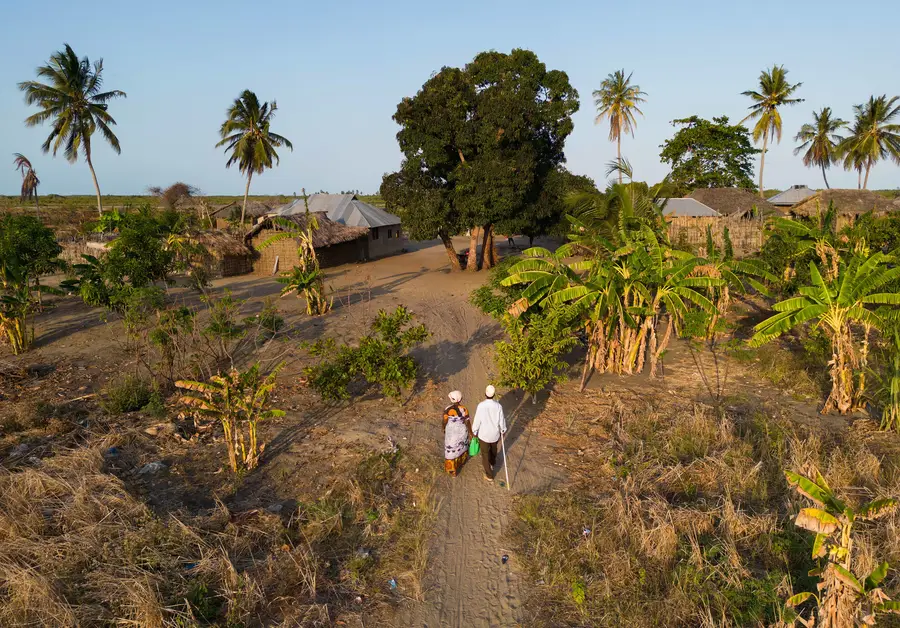
In remote areas of Tanzania, community drug distributors travel miles to visit families in their homes as part of a nationwide effort to eliminate lymphatic filariasis (LF). Photo Credit: RTI International/Roshni Lodhia
In the heat of the day, fisherfolk draw their nets from the water. Their vessels dot the coastline in Kilwa, a coastal district in southern Tanzania that encompasses five islands. Fishing pays the bills and feeds the families of many in Kilwa.
But these fisherfolk—and their neighbors—are threatened by a disease spread by mosquitoes that is proving difficult to eliminate in certain areas, including Kilwa. Tanzanians, like Dr. Faraja Lyamuya from Tanzania’s Ministry of Health, are leading the charge to address these neglected tropical diseases (NTDs) and tailor treatment to reach all Tanzanians at risk, including fisherfolk.
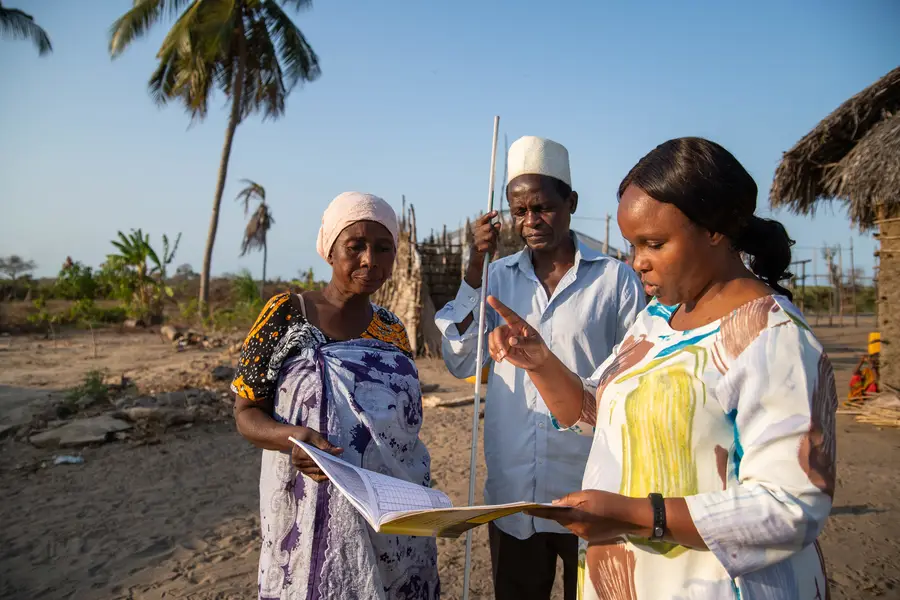
Dr. Faraja Lyamuya, LF Focal Person for the Ministry of Health in Tanzania, consulting with community health workers during a LF treatment campaign in Kilwa District, Tanzania. Photo credit: RTI International/Roshni Lodhia
“I love doing this work because I see how people are suffering and we know that if we can help them, they can avoid the effects of this disease,” Dr. Lyamuya said. “Our wish is that the next generation of Tanzanians won’t have any cases of it—that it will be out of the picture.”
Across Tanzania, health leaders like Dr. Lyamuya are working to reduce levels of this NTD called lymphatic filariasis (LF), a mosquito-borne parasitic disease, which can lead to disability, stigma, and pain. Today, more than 28 million Tanzanians are free from the risk of contracting it and developing elephantiasis and hydrocele—two conditions that can result from the disease.

Two patients visit a health center for care for elephantiasis caused by lymphatic filariasis. Photo Credit: RTI International/Roshni Lodhia
“People become victims of disability because of elephantiasis,” Dr. Lyamuya explained. “It causes not only physical but also psychological damage. It makes them feel like outcasts…and leads to individual poverty, which also leads to poverty in the family and society at large.”
“People were suffering and in a lot of pain,” added Abdalah Mohamedi Milenge, a community drug distributor who works to reach his community with treatment and information about the disease. “After taking medicine, the problems have greatly reduced.”
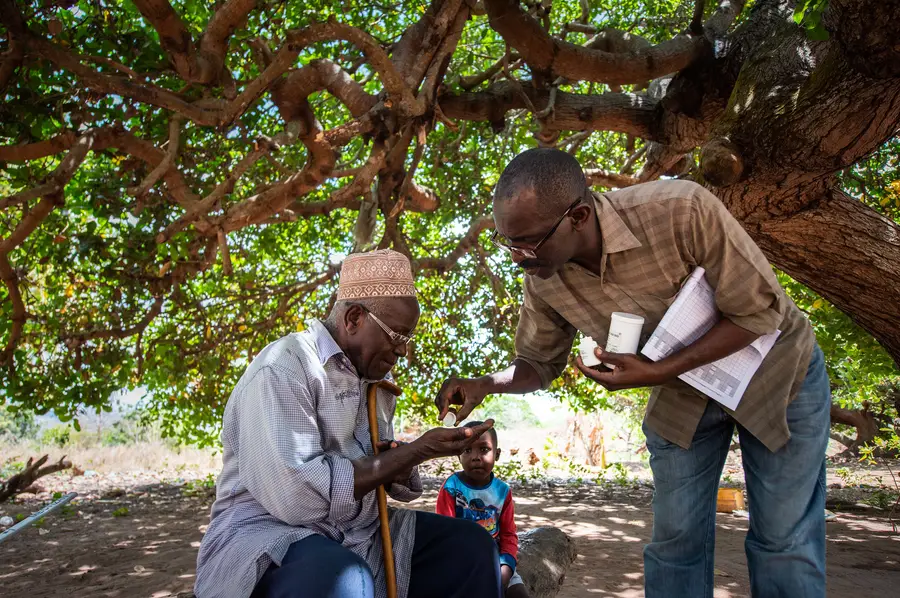
A community drug distributor gives medicine to a family at their home in Tanzania to help them prevent LF infection. Photo Credit: RTI International/Roshni Lodhia
Overcoming skepticism to eliminate lymphatic filariasis
Convincing people to take medicine was an initial challenge—one that education and outreach has helped to alleviate.
“People were less receptive [to the medicine] in the beginning because they thought it would affect men’s virility and have side effects,” Abdallah said. “Providing education to local villages and neighborhoods [on the safety and efficacy of the medicines] is important for motivating people.”
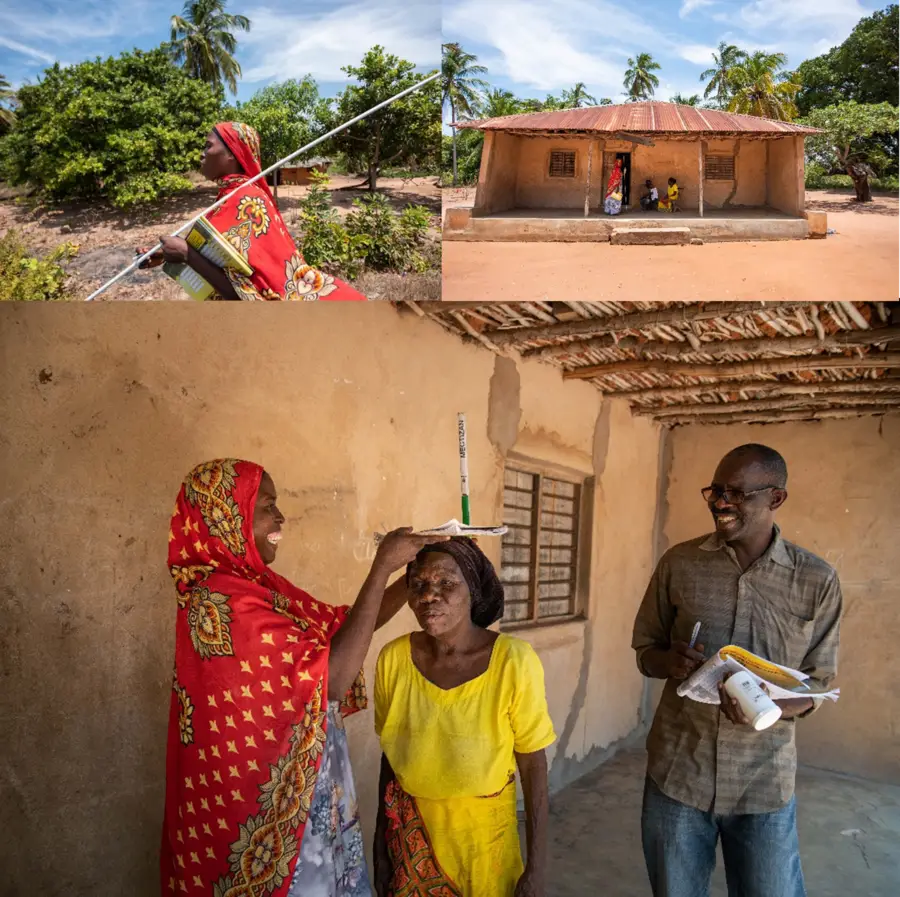
Community drug distributors measure the height of villagers in Kilwa to determine the right dose of LF medicine to give them during home visits. Photo Credit: RTI International/Roshni Lodhia
Khadija Mohamed Kikara, a community drug distributor who farms the rest of the year, met similar skepticism when first distributing medicine eight years ago. “People were afraid of the medicine in the beginning,” she said. “The perception is now good. People have benefitted from this medicine to the point that they will come up to us and ask when the next distribution will be.”
“We heard about drug distribution on the radio,” said Mariamu Almasi Lucas, a resident of Kilwa. “The advertisements explain health issues and other topics. We love listening to the radio.”

Community drug distributors meet with Mariamu’s family to discuss the importance of LF prevention and answer any questions they may have before taking medicine. Photo Credit: RTI International/Roshni Lodhia
She and her children have been actively involved in receiving treatment in their community. “I take medicine now because I am used to it,” she said. “It has become normal.”
Community health workers and volunteers like Abdullah and Kikara are part of the Government of Tanzania’s nationwide strategy to eliminate LF. The government first mapped where the disease was present, then scaled up nationwide treatment for it with the help of the U.S. Agency for International Development and partners, including support for the delivery of more than 74 million LF treatments. Today, Tanzania is close to its goal of eliminating LF.
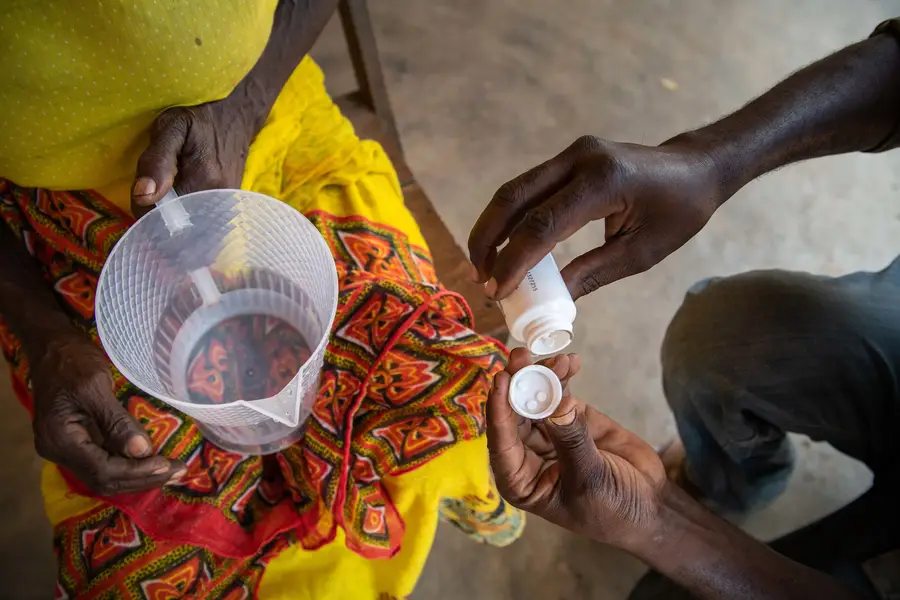
Preventive treatment campaigns for LF, which distribute medicine to all individuals in an at-risk area, have helped reduce the risk of LF transmission across Tanzania. Photo Credit: RTI International/Roshni Lodhia
Surveys have measured and tracked Tanzania’s incredible progress to eliminate LF, finding that transmission of the disease continues in only 7 districts, including Kilwa. Tanzania must now ensure all Tanzanians are reached with treatment to achieve the nationwide goal of elimination.
“In the few places currently left, there are challenges that are different. Some we know and some we possibly don’t know. We need to study those areas to be able to achieve the best results,” Dr. Lyamuya said.
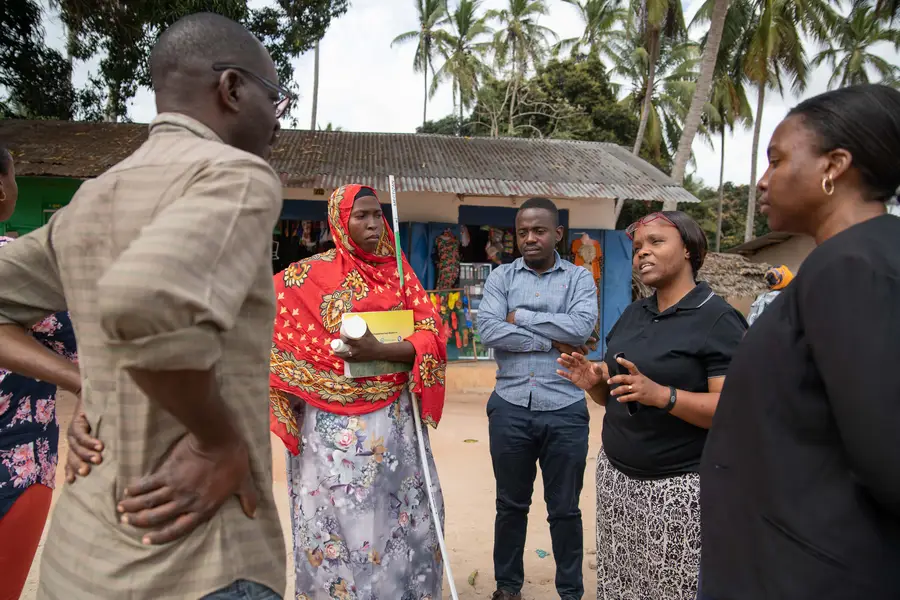
Dr. Faraja Lyamuya, LF Focal Person for the Ministry of Health in Tanzania, consulting with community health workers during a LF treatment campaign in Kilwa District, Tanzania. Photo credit: RTI International/Roshni Lodhia
The Government of Tanzania is working to do just that. With support from USAID’s Act to End NTDs | East program, Tanzania recently conducted an investigation that found that fisherfolk had a higher prevalence of LF, due in part to their hours working offshore and potentially missing or not participating in treatment campaigns. Additional challenges were also identified, including the remoteness of communities in Kilwa and surrounding areas.
“It is hard to reach the villagers unless they come to us,” Kikara said. “It takes two hours by foot. We have a bicycle but it still isn’t enough.”
Act | East is supporting Tanzania to engage community members and understand the nuances of why people are being missed by treatment—or refusing it. This analysis enables the government and partners to adapt and innovate to ensure all Tanzanians are reached with NTD services.
This includes tailoring information and outreach strategies; microplanning to ensure each district has their own data, budget, and strategy to reach individuals and communities; and using electronic data collection tools like the supervisor's coverage tool which enables supervisors to quickly respond to areas where coverage is low and adapt in real time.
“We do surveys to check transmission rates and have seen that the level of infection is decreasing,” Dr. Lyamuya said. “At the moment peoples’ reception is good. But we need different strategies for the last few areas left. We need to learn more about them and plan with the community themselves on how we will reach everyone to eliminate this disease.”
“By partnering with the local community, we will be able to achieve our goals of reducing transmission to a level that LF is no longer a problem in these communities,” she added.
Through the Act to End NTDs | East program, we are continuing to support the Government of Tanzania and local leaders in their efforts to eliminate LF as a public health problem, while ensuring no one is left behind.
